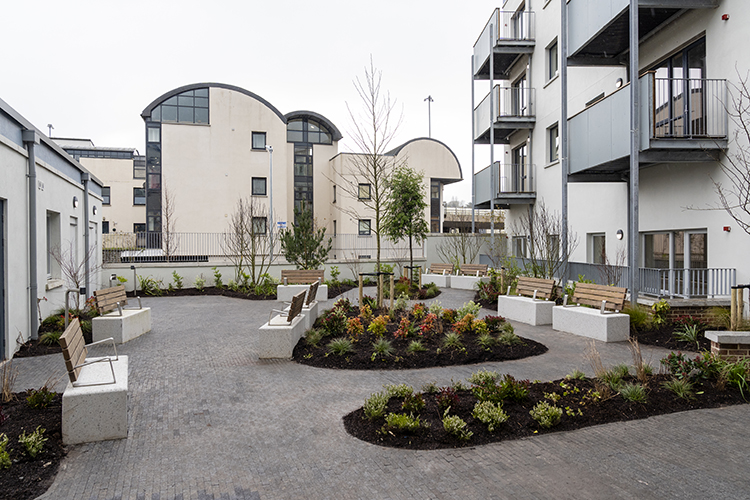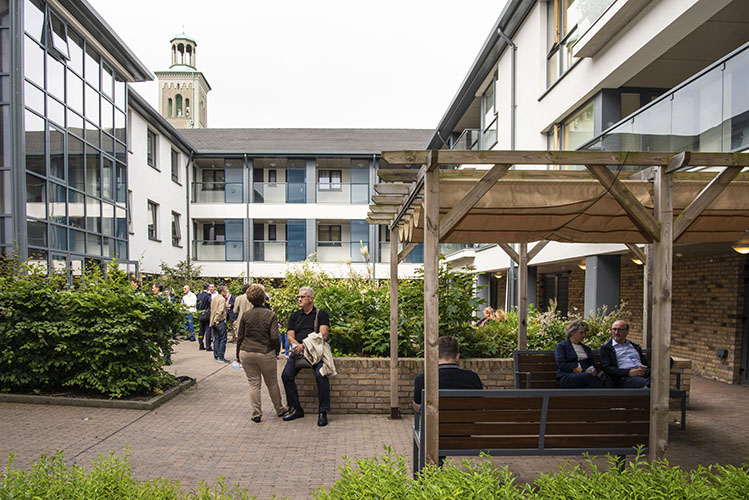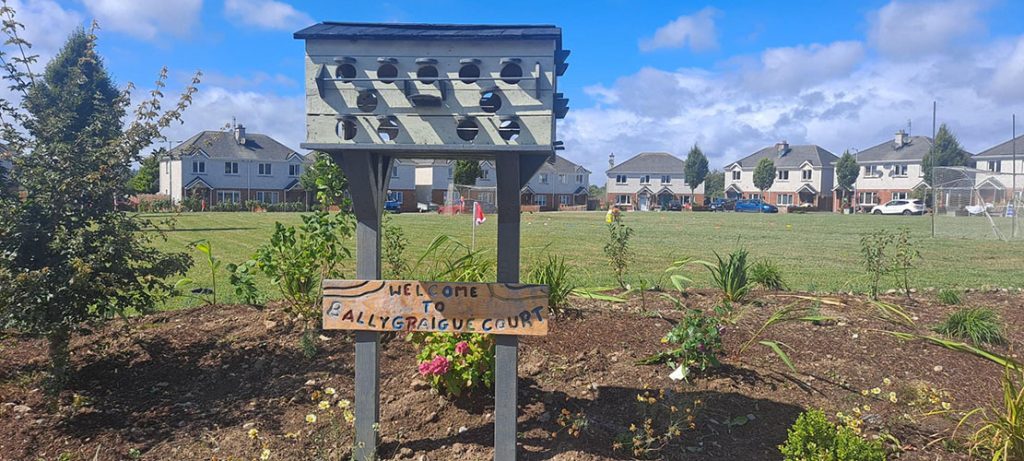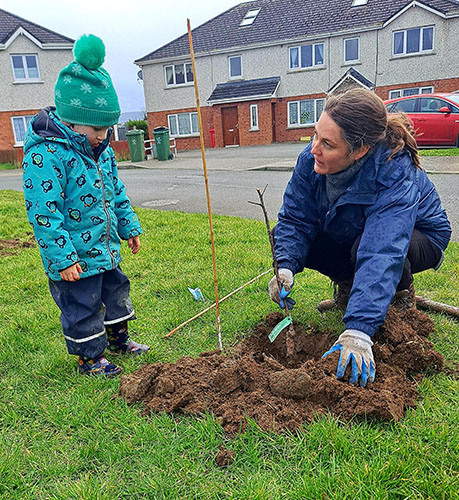Approved housing bodies can play a crucial part in meeting the government’s 2030 retrofit target

Susan Vickers, Head of Environmental Sustainability, Clúid Housing, speaks with Robbie Cousins about building sustainable communities, the AHB’s ambitious retrofitting programme and why there is an urgent need for a public awareness and education campaign on non-fossil-fuel-burning homes
Celebrating 30 years in operation this year, Clúid Housing is one of the country’s largest approved housing bodies (AHBs), with nearly 12,000 properties providing homes for over 30,000 people. In 2023, Clúid added 1,085 properties to its stock, and it has circa 1,200 properties in the pipeline for this year. The agency, headed by CEO Brian O’Gorman, employs over 300 people. It develops most of its housing projects through standard procurement or in-house design & build-type contracts. Over the past 30 years, it has amassed a wealth of experience managing the construction process. Today, it partners with developers and contractors – large and small – to deliver a range of home types, from multiunit apartment developments to large and small housing schemes in urban and rural settings. Its in-house design team has considerable experience in all aspects of social housing projects. Clúid has developed a design guide to ensure best practice and sustainable design within its residential developments. In 2018, it commenced an ambitious refurbishment programme to convert its older housing stock to more sustainable low-energy homes.
Build Green, Live Green, Be Green
Clúid’s sustainability and greening strategy, ‘Building a Sustainable Future Together’, is integral to its operations. The AHB’s vision is ‘A society where everyone has a great place to live’. The sustainability strategy states: “With this vision comes the responsibility of creating sustainable homes and communities, reducing the environmental impact of our organisation and contributing to Ireland’s emission reduction targets. Our greening strategy sets out our commitment to playing a part in this vital climate action work”.
Susan Vickers, who joined the AHB in 2020, is head of environmental sustainability at Clúid Housing and is charged with delivering its sustainability strategy. She says the strategy is ambitious and has three pillars at its core. These are: ‘Build Green’, ‘Live Green’, and ‘Be Green’. Susan Vickers explains: “Build Green covers all the elements of how we build, how we retrofit, and the infrastructure of our developments, with biodiversity as an integral part of this pillar. The Live Green pillar is about supporting and empowering our residents to live more sustainably, with biodiversity a vital part of this. This puts sustainability at the core of how the homes are managed. “Finally, Be Green covers the Clúid organisation and how we can operate more sustainably.”


Working with others
With the construction industry in the midst of a massive transformation, Vickers believes that any changes made to processes or construction methods must be informed by sustainability. She comments: “If, for example, we are discussing advances in digitisation, greater efficiency, MMC or upskilling, impacts on sustainability must be at the core of any decisions being made. We have the opportunity to make a real impact, but several crucial elements still need to be implemented. The most important of these are greater collaboration and knowledge sharing, improved funding models and education on a broader scale, including educating the general public about how airtight, low-energy homes work. “Bodies such as the Irish Green Building Council (IGBC) champion a holistic approach to getting these crucial elements in place. But we are on an extremely tight schedule to hit our 2030 targets of reducing greenhouse gas emissions by 51% and improving energy efficiency by 50%.”
Working with developers
Susan Vickers points out that Clúid works with developers and contractors of all sizes across the country, and she understands that everyone, Clúid included, is on a sustainability learning curve. In this context, Clúid wants to do all that it can to support partners and stakeholders to develop their sustainability knowledge and skills. “We collaborate with developers and contractors across the country. We are a nationwide organisation, building and acquiring properties in cities and towns. We work with contractors and developers, large and small, who can meet our requirements. “We are conscious that everyone is learning in the sustainability space. We want to work with developers and contractors on methodologies and frameworks to help reduce embodied and operational carbon emissions and bring in ways to incorporate this into our Bill of Quantities and our overall designs. “Regarding procurement, we are mindful that nobody has definitive answers on sustainability. We are all still getting a better understanding of what’s required, and we want to share what we have learned so we can all move through this stage as quickly as possible.”

Biodiversity
Clúid’s Design & Build guidelines incorporate sustainability and give clear direction for developers and contractors.

Clúid also has a landscaping and biodiversity guide, which Vickers says is the first in the building sector. “Our landscaping and biodiversity guidelines set out how we want external spaces developed in terms of biodiversity enhancement and protection. For example, we have recommendations around specifications for hard boundaries. Where possible, we would like boundary fences that allow movement of wildlife. Our planting guidelines also specify native and pollinator species.”
Thriving communities
Clúid’s mission is to create thriving communities. “We build homes, and we build communities,” Susan Vickers notes. “We provide homes that don’t cost the earth to run. Clúid developments must be communities where people can enjoy living and not feel isolated in concrete jungles. We want healthy communities where people can thrive. “Sustainability and biodiversity go hand in hand with this thinking. Placing the resident at the core of everything we design, build and manage is what we aspire to do as a housing body.”
Retrofitting
Retrofitting of existing housing stock is a considerable challenge, particularly for AHBs. Clúid Housing has ambitious retrofit targets. Since 2018, it has retrofitted nearly 2,000 properties, addressing the poorer-performing properties first. “Our average BER across all of our properties is B3, which is quite good. However, we still have about 4,000 poor-performing properties remaining that need to be retrofitted. “Retrofitting a house is fairly straightforward but retrofitting multi-unit developments is trickier and much more costly. We get 50% funding from SEAI, with the other half drawn from our limited resources. “Local authorities get full funding from the government to retrofit their social housing stock. It is our contention that AHBs should be able to cover our costs from a similar type of fund. After all, it’s all social housing. Clúid has excellent management structures in place, and our operations team has the knowledge and experience to get the work done. There really should be no differentiation between local authority and AHB social housing. If the government is serious about retrofitting 500,000 homes by the end of the decade, funding the AHB sector appropriately to deliver effective retrofit programmes would go a considerable way to achieving this.”

Working with IGBC
Clúid Housing is a member of the IGBC and takes an active role in a number of key committees and working groups. In addition to chairing the IGBC Community of Practice (CoP) on Biodiversity, Susan Vickers is a member of the IGBC’s Healthy Homes Ireland (HHI) steering committee. HHI, with support from VELUX, is a cross-sector stakeholder body working to identify and address health problems caused by existing low-quality homes. In August 2023, it published a series of recommendations for improving indoor environmental quality (IEQ). One of these recommendations was a public awareness campaign on the impact of housing on health and how to run an energy-efficient and healthy home. Susan Vickers believes the government needs to educate the population in general about managing homes that have been retrofitted or built to NZEB or ZEB standards. She explains: “The work doesn’t stop when the retrofit is completed. People need support and training around how to manage their homes. New technologies have been introduced, and a new mindset is required to operate homes that don’t run on fossil fuels. “There’s an education piece that has to be put in place. People living in airtight homes need to understand, for example, what air exchange is, why it needs to happen and how they can manage it. They must also understand the impact of covering ventilation vents or drying clothes on radiators. If airtight homes are not getting the exchange that is needed, then air quality issues arise.” She adds: “Broadly speaking, working on behaviour change is much more resource-heavy than stakeholders first thought was required. The work of the HHI group has highlighted this. Educational resources are needed from the government, and these costs must be factored into retrofit programmes.”
Community of Practice on Biodiversity
Susan Vickers also chairs the CoP on Biodiversity, which she says is the first community of its kind. “The biodiversity CoP has brought together a disparate mix of stakeholders with an interest in biodiversity. These are people who regulate for, design, build and manage residential, public and commercial properties. The focus has been comprehensive. I think it has so far been of huge value to people directly involved and will help the sector enhance biodiversity in assets under our management or ownership.”
Biodiversity Showcase
She adds that IGBC recently received funding from Construct Innovate, Ireland’s construction technology centre, to fund a biodiversity showcase initiative. “We will launch this during Biodiversity Week in May. The showcase will cover aspects of biodiversity in the built environment nationwide. From Clúid’s perspective, we are looking to highlight biodiversity in new schemes as well as in existing schemes where residents have worked at improving biodiversity.” Susan Vickers notes that the IGBC has done an incredible job in bringing together key stakeholders from across the built environment sector to look at many aspects of sustainability. “The great thing about the IGBC is that it has engaged experts and decision-makers from disparate parts of the sector to explore sustainability in its broadest sense. It has also brought together all the strands and is producing integrated and cohesive solutions and plans for industry and the government to work with.”
The future
In closing, Susan Vickers mentions a sustainability partnership Clúid Housing has embarked on with a developer partner that she hopes will bring together the sustainability threads she has been discussing. “Working in partnership with a developer, we recently launched a plan to inform our future building frameworks and methodologies. The objective of this partnership is to optimise the development potential of sites economically and environmentally. The continuous learnings from the partnership will be shared with wider stakeholders as appropriate to advance climate action goals in this sector,” she concludes.




